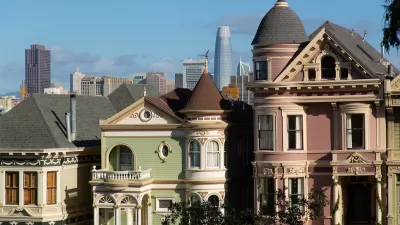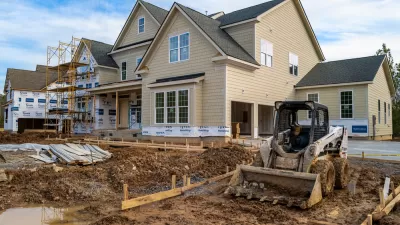NIMBYism is obstructing the urban planning process, according to architect and New Urbanist Andres Duany. He suggests changing the public participation process to unclog the system.
In this interview from Architect, Diana Lind talks with Duany about the problems associated with public participation and how they can negatively affect the planning process.
"Diana Lind: Is there a better way to get public participation in the design process without a project falling prey to local interests?
Andres Duany: Conventional public participation makes the mistake of privileging the neighbors, the people who live within a half-mile of the given proposal. So it becomes extremely difficult to, say, locate a school or an infill project. While democracy doesn't need a great number of voters to function well, it does require a full cross-section to participate. That is the source of its collective intelligence. You can't confuse neighbors with the community as a whole.
We propose using the jury pool or the phone book to invite a random group, which is then understood to be apart from the self-interested neighbors, just as the developer or the school board are acknowledged as vested interests. The neighbors must be seen as vested interests as well."
FULL STORY: Control the Masses

Trump Administration Could Effectively End Housing Voucher Program
Federal officials are eyeing major cuts to the Section 8 program that helps millions of low-income households pay rent.

Planetizen Federal Action Tracker
A weekly monitor of how Trump’s orders and actions are impacting planners and planning in America.

Ken Jennings Launches Transit Web Series
The Jeopardy champ wants you to ride public transit.

Philadelphia Is Expanding its Network of Roundabouts
Roundabouts are widely shown to decrease traffic speed, reduce congestion, and improve efficiency.

Why Bike Lanes Are Good: An Explainer for the US Transportation Secretary
Sean Duffy says there’s no evidence that bike lanes have benefits. Streetsblog — and federal agencies’ own data — beg to differ.

California Invests Additional $5M in Electric School Buses
The state wants to electrify all of its school bus fleets by 2035.
Urban Design for Planners 1: Software Tools
This six-course series explores essential urban design concepts using open source software and equips planners with the tools they need to participate fully in the urban design process.
Planning for Universal Design
Learn the tools for implementing Universal Design in planning regulations.
Ada County Highway District
Clanton & Associates, Inc.
Jessamine County Fiscal Court
Institute for Housing and Urban Development Studies (IHS)
City of Grandview
Harvard GSD Executive Education
Toledo-Lucas County Plan Commissions
Salt Lake City
NYU Wagner Graduate School of Public Service





























